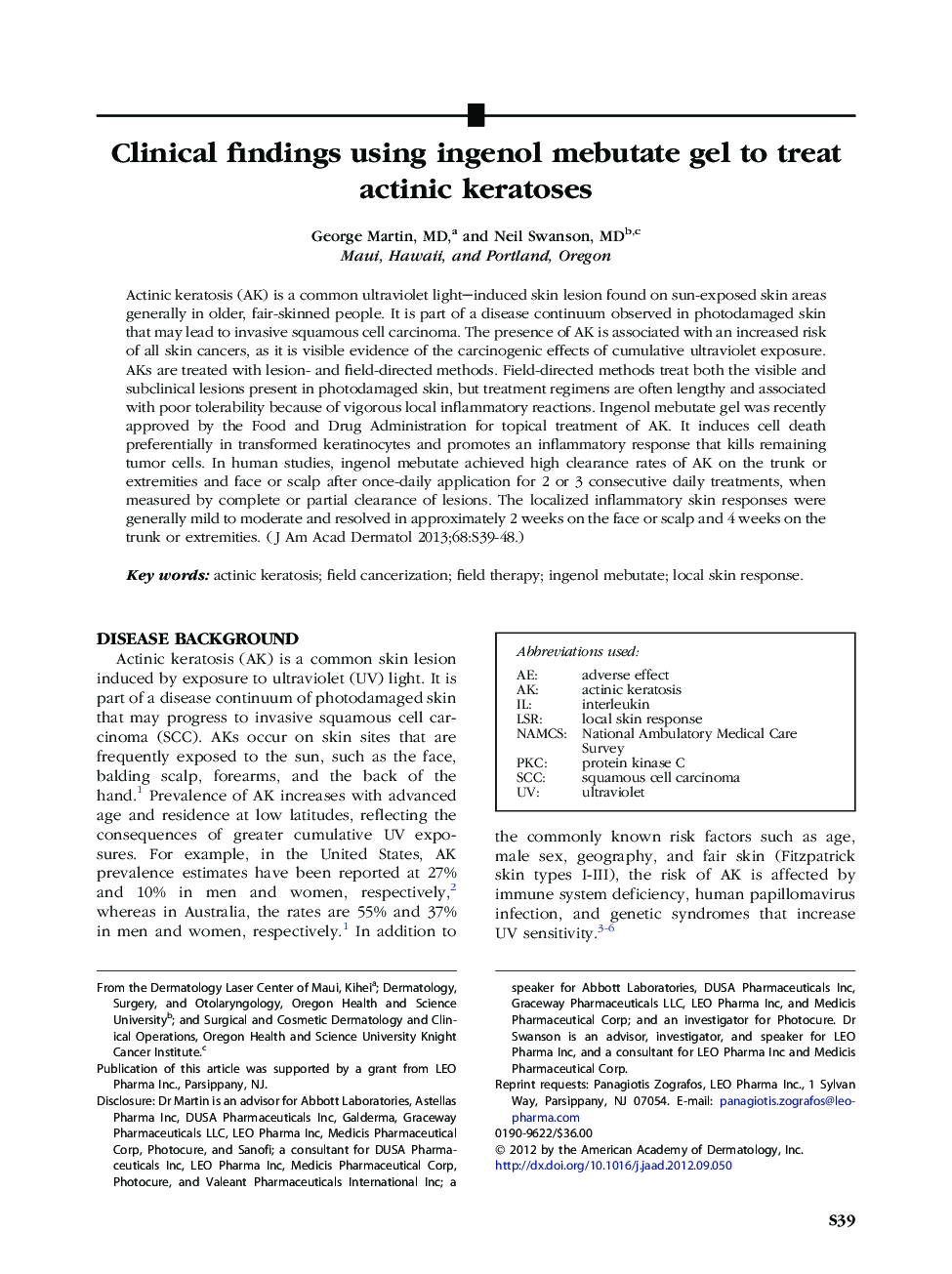| Article ID | Journal | Published Year | Pages | File Type |
|---|---|---|---|---|
| 3206003 | Journal of the American Academy of Dermatology | 2013 | 10 Pages |
Actinic keratosis (AK) is a common ultraviolet light–induced skin lesion found on sun-exposed skin areas generally in older, fair-skinned people. It is part of a disease continuum observed in photodamaged skin that may lead to invasive squamous cell carcinoma. The presence of AK is associated with an increased risk of all skin cancers, as it is visible evidence of the carcinogenic effects of cumulative ultraviolet exposure. AKs are treated with lesion- and field-directed methods. Field-directed methods treat both the visible and subclinical lesions present in photodamaged skin, but treatment regimens are often lengthy and associated with poor tolerability because of vigorous local inflammatory reactions. Ingenol mebutate gel was recently approved by the Food and Drug Administration for topical treatment of AK. It induces cell death preferentially in transformed keratinocytes and promotes an inflammatory response that kills remaining tumor cells. In human studies, ingenol mebutate achieved high clearance rates of AK on the trunk or extremities and face or scalp after once-daily application for 2 or 3 consecutive daily treatments, when measured by complete or partial clearance of lesions. The localized inflammatory skin responses were generally mild to moderate and resolved in approximately 2 weeks on the face or scalp and 4 weeks on the trunk or extremities.
